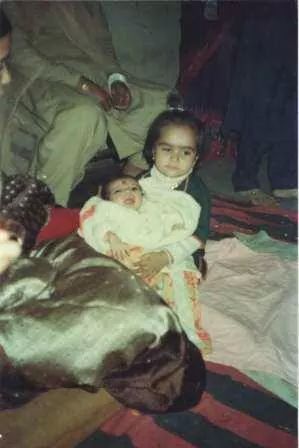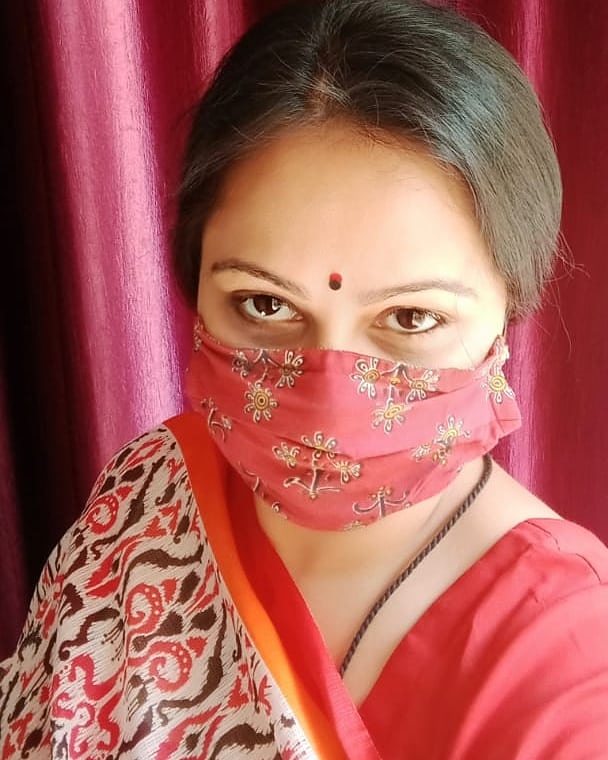I Was Just 3 When I Got Diabetes. Here’s Why Parents Must Read My Story
India is estimated to be home to about 97,700 children with juvenile diabetes — a disease that can be traumatic to parents and children. Here's how Delhi's Megha Sood dealt with it.

On 6 February 1984, I, Megha Sood, was diagnosed with Juvenile Diabetes. As a three-and-a-half-year-old, I did not understand what was happening. But my life changed dramatically.
Having lived with Diabetes for over three decades now, at 39, I continue to fight it every day.
That day in 1984 is etched in memory. I remember it was a joyous occasion for the family. My mother was in the hospital, and we were awaiting news of her delivering my sibling. I was staying with my maternal grandparents. My father returned and found me asleep for a very long while.
I didn’t usually sleep at odd hours. Suspicious, my father checked on me and discovered that I was not asleep, but unconscious!

I was rushed to the same hospital where my mother was admitted for her delivery, and several blood tests later, it was found that I was suffering from Juvenile Diabetes. On one side, the birth of my baby brother was being celebrated, and on the other, my parents were coming to terms with the fact that I had Juvenile Diabetes.
A repercussion of Measles?
I was told by my doctors that having had Measles twice during my young age had caused my auto-immune system to shut down and that in turn led to Diabetes. It was nothing to do with my genetics. In my case, no one in the family had Diabetes.
I was too young to understand what Diabetes was and how it was impacting my life – I grew up with it. One is so much better equipped to handle Diabetes today, whether Juvenile or otherwise. When I was growing up, it was still fairly new in India, and not much was known about Juvenile Diabetes. In fact, something that is a regular feature now when testing for sugar levels is the HBA1C test, which was not something that was there during my growing up years.
Thick big insulin needles

As a child, one of the things that troubled me immensely about having Diabetes was having to take an Insulin injection everyday. It wasn’t like it is today, thin and almost non-needle like. What I had to use was thick, painful, and not at all conducive for children to take. The syringe we used also had to be sterilised before every use. They weren’t disposable, and I remember that being a task in itself.
As I grew up the fear became bigger, but I was constantly told that this was part of my life now and if I did not adhere to this, then I would not be able to survive. There was no denying that life during my growing up years was difficult.
Diabetes has always been a part of my life.

As a child, having grown up with Diabetes, I can say that very often counselling is needed for the parents, more than the child. The fear that the parent or caregiver feels is reflected in how the child perceives the illness. Questions like “Why me?” are often asked, but it is important to learn to deal with it.
Parents and caregivers have to take extra care to equip the child to deal with it. Creating a bond between the parent and a child during this period is very important. I had a lot of support from my father and he always encouraged me to live my life without being bogged down by the judgements that others often passed.
I never let my condition come in the way of everything I wanted to achieve in life. From studying living away from home and earning a degree in nutrition science, I have managed it all.
– Megha Sood, As Told To Vidya Raja
Dr. Krishan Chugh, Director and Head of Department, Pediatrics, Fortis Memorial Research Institute Gurugram has the following to say to parents who have children with juvenile diabetes.
When to bring the child for a checkup?
Dr Chugh says that if the child is passing more urine than usual, consuming more water, is not gaining weight and looking lethargic and tired without any reason, then that is cause to investigate. While these are the initial markers, unexpected and regular bed-wetting should also be looked into, says Dr Chugh.
Family history of Diabetes
While Dr Chugh has seen patients as young as in their first or second year of birth, he says that the average age is between five to ten, during which Juvenile Diabetes presents itself. A family history of Juvenile Diabetes must be looked into in such cases. In children with Juvenile Diabetes, there is no oral medication that is prescribed. It is only controlled by insulin injections, which needs to be given almost 3 to 4 times a day.
Need to have a supportive family
While Juvenile Diabetes is something that the child goes through, it needs the support and inputs from every member of the household. Dr Chugh says that it is important to have everyone on the same page when it comes to management of the disease. It becomes difficult for working parents to manage, given the strict schedule one needs to follow, both for food intake and insulin.
Monitored food and exercise routine
Dr Chugh emphasises children with Juvenile Diabetes follow proper food and exercise routine. He says, “Ensuring a lot of physical activity on one day and having a very lethargic or sedentary routine another day will be counterproductive. Both food and exercise must be monitored regularly.”
While children with Juvenile Diabetes have to make certain changes and adaptations to their lifestyle, people like Megha prove that nothing is impossible to achieve.
A qualified nutritionist practising in Delhi, Megha is available to speak to parents and caregivers of children with Juvenile Diabetes. You can write to her at [email protected].
(Edited by Vinayak Hegde)

Similar Story

I Live With Schizophrenia; Here’s What I Want People Around Me to Understand
Schizophrenia is often regarded as the most severe among all mental illnesses, but people living with it are not hostile, aggressive, or “wild”, as they are often believed to be. There are many ways we can build individual and community support for those living with the disorder.
Read more >
If you found our stories insightful, informative, or even just enjoyable, we invite you to consider making a voluntary payment to support the work we do at The Better India. Your contribution helps us continue producing quality content that educates, inspires, and drives positive change.
Choose one of the payment options below for your contribution-
By paying for the stories you value, you directly contribute to sustaining our efforts focused on making a difference in the world. Together, let's ensure that impactful stories continue to be told and shared, enriching lives and communities alike.
Thank you for your support. Here are some frequently asked questions you might find helpful to know why you are contributing?


This story made me
-
97
-
121
-
89
-
167












